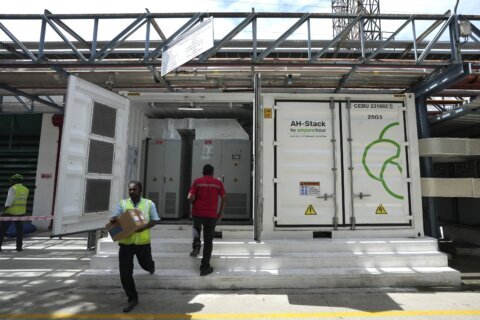U.S. colleges are facing a laundry list of challenges that affect their financial viability, from higher operating expenses and downward enrollment trends to shaky state support, shriveling endowments and a crisis in public confidence.
For many institutions, two other thunderclouds are adding to a gathering existential storm: crippling debt and deferred maintenance costs, according to some experts.
“It doesn’t look rosy for the next 10 to 15 years for many colleges and universities,” says Gregory Price, a business professor in the economics and finance department at the University of New Orleans in Louisiana. “It’s not going to end well for a lot of us.”
Here’s what prospective undergraduate and graduate students should know about institutional debt and deferred maintenance, and how they can affect the price tag of a college credential.
Institutional Debt: More Colleges in a Precarious Position
Debt and interest that must be paid on it are significant costs for many colleges and universities. Crippling debt is a common factor in a growing number of college closures and mergers, particularly among smaller private and regional colleges and universities in the Midwest and Northeast, experts say.
For example, trustees of Finlandia University in Michigan issued a statement in March that cited “an unbearable debt load” as a key factor in the decision to not enroll students for 2023-2024. Officials are helping students transfer amid phased staff layoffs as the 127-year-old school closes permanently.
Other colleges are using debt to keep their doors open, and that’s a huge red flag, observers say.
“Higher education institutions have continued to increase the amount of long-term debt that they hold during a period where enrollment growth in the sector has slowed and is expected to decline. This raises a question about whether the sector is approaching a limit to the benefits that debt financing can provide,” reads a report on a 2021 survey conducted by consulting firm EY-Parthenon, in partnership with the National Association of College and Business Officers.
Based on responses from 177 four-year public and not-for-profit private schools, the study reported that institutional leaders often make decisions about debt based mainly on whether a college “can” take on more debt “without sufficient attention paid to whether it should.”
“Findings suggest that many institutions excel at understanding and managing their debt capacity, but can improve the methods used to assess the long-term costs and benefits of their investments more holistically,” the report concluded. “In a rapidly changing environment, this is no small feat, but having these critical conversations across stakeholders can drive better decision making. In the absence of doing so, institutions risk allowing their debt burden to become just one more driver of the rising cost of higher education that is contributing to so many of the sector’s challenges.”
[One Culprit in Rising College Costs: Administrative Expenses]
Deep debt doesn’t bode well for a school’s future, experts say, suggesting that more colleges are likely to find themselves unable to manage existing debt or take on more if needed, resulting in financial repercussions for students.
“Quite frankly, many institutions, especially small and medium-sized institutions, are dealing with significant financial issues. There are estimates that over a third of them have negative operating margins. That’s just unsustainable,” says Paul Friga, a clinical associate professor of strategy and entrepreneurship at the University of North Carolina’s Kenan-Flagler Business School.
The unprecedented $69 billion in COVID-19 pandemic aid that Congress gave nearly 5,700 colleges and universities in 2020 and 2021 provided a temporary cushion against financial challenges, but many schools failed to “make strategic investments in technology” or do “proper right-sizing to deal with decreasing enrollments,” says Friga, who is also a senior consultant and practice area leader for strategic transformation of higher education with AGB Consulting.
“Debt significantly increased over the last decade,” he says, “and there are fewer debt options for some of these schools, especially if they’re already leveraged with debt and may not be able to add more.”
Consider Cazenovia College in upstate New York, which decided to shutter after the spring 2023 term following default in September 2022 on $25 million in bond debt. The college, which also cited the pandemic and “skyrocketing inflation” as sources of its financial distress, took on the new debt to refinance existing debt and to spruce up facilities in hopes of boosting declining enrollment.
The death knell, ringing just before the school’s 200th anniversary in 2024, was an independent audit that expressed serious doubt that Cazenovia could make future bond payments.
Meanwhile, nearly 1,000 miles west at another private nonprofit institution, Iowa Wesleyan University trustees voted in March to close the 181-year-old school after an independent accounting firm determined that a federal grant wouldn’t solve systemic financial issues. Iowa Wesleyan had put its 60-acre campus up as collateral in 2016 on a $26 million-plus loan from the U.S. Department of Agriculture, a debt that could be recalled in full in November 2023.
The school’s long-term financial outlook was so bleak that the state rejected its request in February for $12 million in pandemic relief money to fund ongoing operational costs, according to a March 28 statement by Gov. Kim Reynolds.
[READ: Is College Worth the Cost? Factors to Consider.]
With the end of the federal pandemic relief aid that flowed to colleges, there likely will be “a catch-up period and maybe even an acceleration of closures” over the next several years among schools that were already struggling and likely to close, says Rachel Burns, a senior policy analyst for the State Higher Education Executive Officers Association, which studies how college closures and mergers affect students.
Deferred Maintenance: Days of Reckoning Loom
Facilities maintenance that has been delayed is another financial cliff on the horizon for many schools, some observers say.
The collective price tag for deferred maintenance — now commonly called capital renewal — has reached billions of dollars on U.S. college campuses, and those costs have soared over the last year due to inflation, according to the 2023 “State of Facilities in Higher Education” report by Gordian, an international construction information platform that helps colleges and other organizations optimize capital investments and minimize long-term operating costs.
“The scale of deferred capital renewal at schools has reached a level that cannot be tolerated — a 36% shortfall. This gap is simply not possible to fund given new financial realities,” the report states, noting that the problem is fueled by “a 13-year pattern of underinvestment in existing space.”
For capital repair and replacement needs, the cost per gross square foot rose from $103 in 2022 to more than $133 this year, meaning that every 1 million square feet of existing buildings will require more than $133 million for renewal, according to the report.
“The reality today is that the stewardship demands are now so acute, facilities issues can no longer be reactive, and every facilities, planning and business leader will need to be a key participant in institutional decision making going forward,” the report concludes.
Many schools that over time added buildings and other facilities to accommodate increasing enrollment, potential student population growth or both are now left with the cost of maintaining those spaces — and in some cases still paying them off — in the face of increasingly fewer students to access them.
Simply put, “there are not enough butts for the seats” at these schools, Price says.
“I think all colleges and universities need to find a sweet spot and stay there. Don’t chase enrollment gains. Pick a safe lane and stay there. Sustainability is the key,” Price says, citing Amherst College in Massachusetts as a model of that.
Friga predicts that costly repairs of “overbuilt infrastructure for the level of need” will become a fiscal bullet impossible for some colleges to dodge within the next few years, especially in light of a greater interest in online education accelerated by the pandemic.
How an Institution’s Finances Affect Students
The costs associated with colleges and universities doing business are ultimately passed on to students in tuition and fees, experts say, so an institution’s financial decisions matter.
[How to Decide if You’re Ready for College]
Friga predicts that the largest public and private colleges and universities — especially those with strong endowments, significant state support or great public images — will withstand the gathering economic storm. Price counts Ivy League schools and flagship state universities in that number. But a coming “consolidation era” will put more schools in the category of merger, acquisition, affiliation or closure along with approximately 100 other colleges that took one of those routes in the last three years, Friga says.
“Prospective students and parents, if it’s a small school that’s tuition-dependent, check enrollment trends and look at the endowment and maybe peruse some of the high-level financials,” he advises. “It’s a low number of institutions susceptible to closure. However, you want to make sure you go somewhere that’s not having problems making payroll.”
Burns suggests that students investigate numerous other areas of a school, including: its accreditor and accreditation standing; federal College Scorecard data on student outcomes; transferable courses; back-up options if a school is in a category more prone to closures for financial reasons; and strength of state authorization policies that govern higher education.
“It’s unfortunate that the onus has to fall on students, but at some level it does,” Burns says.
While some experts question how aware current and prospective students are of the numerous institutional variables that affect college affordability, Price suggests that most know enough to understand the personal impact.
“They know that schools are less generous in giving out financial aid,” Price says, “and taking on more (student loan) debt puts more burden on them. There’s pushback against that.”
More from U.S. News
See How Average Student Loan Debt Has Changed
The Ultimate Guide to Understanding College Financial Aid
12 College Fees That May Surprise You
Look for These Red Flags in a College’s Finances originally appeared on usnews.com







